






Do you have a question about the Siemens SIMATIC S7-1200 and is the answer not in the manual?
Overview of the S7-1200 controller, its features, and capabilities, including compact design and powerful instruction set.
Details on modules and plug-in boards for expanding CPU functionality with additional I/O or communication protocols.
Description of various expansion modules like signal boards, communication modules, and technology modules.
Overview of SIMATIC HMI Basic Panels, their features, technical data, and certifications.
Guidelines for installing the S7-1200 PLC, including dimensions, clearance, and safety warnings.
How to use task cards to drag and drop instructions into the user program for efficient development.
Changing CPU operating mode (STOP or RUN) using toolbar buttons or the operator panel.
Using project and global libraries to reuse stored objects like blocks and HMI components across projects.
Saving configurations of unplugged modules in a project to reinsert them without reconfiguration.
Step-by-step guide to creating a new project in STEP 7, including adding devices.
Assigning symbolic names (tags) to I/O and addresses, and linking them in the tag table.
Using generic instructions like 'box' and the CALCULATE instruction for programming.
Establishing network connections between devices in the project using Network view.
Description of the scan cycle including output writing, input reading, program execution, and system maintenance.
Explanation of the three CPU operating modes: STOP, STARTUP, and RUN, and their status LEDs.
Overview of code blocks (OBs, FBs, FCs, DBs) used for structuring user programs and their execution.
Details on memory areas, addressing schemes, and supported data types in the CPU.
Inserting a CPU into the project's device configuration via the 'Add new device' dialog.
Using the hardware catalog to add signal modules, signal boards, communication modules, and battery boards.
Manually assigning an IP address and configuring PROFINET interface properties for the CPU.
Configuring security levels and passwords for restricting access to CPU functions and memory areas.
Choosing between linear and modular structures for organizing user programs using OBs, FBs, and FCs.
Overview of standard programming languages: LAD (Ladder Logic), FBD (Function Block Diagram), and SCL.
Utilizing basic bit logic instructions and powerful functions like compare, move, and conversion.
Using Network view in Device configuration to establish network connections between devices in the project.
Overview of communication types: PROFINET, PROFIBUS, AS-i, S7 communication, and GPRS.
Details on PROFINET and PROFIBUS communication standards and instructions.
Utilizing GET and PUT instructions for communication between S7 CPUs.
Connecting the S7-1200 to GSM networks using the CP 1242-7 for WAN communication.
Using PID_Compact and PID_3Step instructions and their associated technology objects for PID control.
Details on the PID_Compact instruction for universal PID control with integrated self-tuning.
Setting parameters for the PID controller via the technology object configuration editor for optimal performance.
Accessing CPU data and functions through standard web pages via a web browser.
IT considerations like IP address, firewalls, JavaScript, and cookies affecting Web server functionality.
Creating custom HTML pages with PLC data using AWP commands and STEP 7.
Understanding PTO phasing options for stepper/servo drives and their output configurations.
Using STEP 7 tools to configure axis parameters, dynamics, homing, and limit switches.
Overview of MC instructions for controlling axis motion, including Power, Reset, Halt, and Move.
Details on CPU outputs for motion control, drive interface, and limit switches.
Establishing an online connection to a configured CPU for loading programs and diagnostics.
Using operator panel, watch tables, and force tables for online CPU interaction and monitoring.
Comparing code blocks between online CPU and project for synchronization.
Updating the CPU firmware using STEP 7 online and diagnostics tools.
Introduction to IO-Link communication technology for sensors and actuators.
Using the IOL_CALL function block for acyclic communication with IO-Link devices.
Description of the SM 1278 module, functioning as a signal and communication module.
Overview of standards compliance, CE approval, and safety directives.
General specifications and features of various S7-1200 CPU models.
Detailed specifications for digital inputs (DI) and outputs (DQ).
Specifications for analog input/output modules like SB 1231, SB 1232, SM 1234.
Overview of communication interfaces, including PROFIBUS, GPRS, RS485, RS232.
Steps and considerations for replacing a V3.0 CPU with a V4.0 CPU.
Changes in Web server, transfer cards, GET/PUT, and motion control between V3.0 and V4.0 CPUs.
Overview of the S7-1200 controller, its features, and capabilities, including compact design and powerful instruction set.
Details on modules and plug-in boards for expanding CPU functionality with additional I/O or communication protocols.
Description of various expansion modules like signal boards, communication modules, and technology modules.
Overview of SIMATIC HMI Basic Panels, their features, technical data, and certifications.
Guidelines for installing the S7-1200 PLC, including dimensions, clearance, and safety warnings.
How to use task cards to drag and drop instructions into the user program for efficient development.
Changing CPU operating mode (STOP or RUN) using toolbar buttons or the operator panel.
Using project and global libraries to reuse stored objects like blocks and HMI components across projects.
Saving configurations of unplugged modules in a project to reinsert them without reconfiguration.
Step-by-step guide to creating a new project in STEP 7, including adding devices.
Assigning symbolic names (tags) to I/O and addresses, and linking them in the tag table.
Using generic instructions like 'box' and the CALCULATE instruction for programming.
Establishing network connections between devices in the project using Network view.
Description of the scan cycle including output writing, input reading, program execution, and system maintenance.
Explanation of the three CPU operating modes: STOP, STARTUP, and RUN, and their status LEDs.
Overview of code blocks (OBs, FBs, FCs, DBs) used for structuring user programs and their execution.
Details on memory areas, addressing schemes, and supported data types in the CPU.
Inserting a CPU into the project's device configuration via the 'Add new device' dialog.
Using the hardware catalog to add signal modules, signal boards, communication modules, and battery boards.
Manually assigning an IP address and configuring PROFINET interface properties for the CPU.
Configuring security levels and passwords for restricting access to CPU functions and memory areas.
Choosing between linear and modular structures for organizing user programs using OBs, FBs, and FCs.
Overview of standard programming languages: LAD (Ladder Logic), FBD (Function Block Diagram), and SCL.
Utilizing basic bit logic instructions and powerful functions like compare, move, and conversion.
Using Network view in Device configuration to establish network connections between devices in the project.
Overview of communication types: PROFINET, PROFIBUS, AS-i, S7 communication, and GPRS.
Details on PROFINET and PROFIBUS communication standards and instructions.
Utilizing GET and PUT instructions for communication between S7 CPUs.
Connecting the S7-1200 to GSM networks using the CP 1242-7 for WAN communication.
Using PID_Compact and PID_3Step instructions and their associated technology objects for PID control.
Details on the PID_Compact instruction for universal PID control with integrated self-tuning.
Setting parameters for the PID controller via the technology object configuration editor for optimal performance.
Accessing CPU data and functions through standard web pages via a web browser.
IT considerations like IP address, firewalls, JavaScript, and cookies affecting Web server functionality.
Creating custom HTML pages with PLC data using AWP commands and STEP 7.
Understanding PTO phasing options for stepper/servo drives and their output configurations.
Using STEP 7 tools to configure axis parameters, dynamics, homing, and limit switches.
Overview of MC instructions for controlling axis motion, including Power, Reset, Halt, and Move.
Details on CPU outputs for motion control, drive interface, and limit switches.
Establishing an online connection to a configured CPU for loading programs and diagnostics.
Using operator panel, watch tables, and force tables for online CPU interaction and monitoring.
Comparing code blocks between online CPU and project for synchronization.
Updating the CPU firmware using STEP 7 online and diagnostics tools.
Introduction to IO-Link communication technology for sensors and actuators.
Using the IOL_CALL function block for acyclic communication with IO-Link devices.
Description of the SM 1278 module, functioning as a signal and communication module.
Overview of standards compliance, CE approval, and safety directives.
General specifications and features of various S7-1200 CPU models.
Detailed specifications for digital inputs (DI) and outputs (DQ).
Specifications for analog input/output modules like SB 1231, SB 1232, SM 1234.
Overview of communication interfaces, including PROFIBUS, GPRS, RS485, RS232.
Steps and considerations for replacing a V3.0 CPU with a V4.0 CPU.
Changes in Web server, transfer cards, GET/PUT, and motion control between V3.0 and V4.0 CPUs.
| CPU Type | CPU 1211C, CPU 1212C, CPU 1214C, CPU 1215C, CPU 1217C |
|---|---|
| Communication | PROFINET |
| Analog Inputs | 2 |
| Analog Outputs | 2 |
| Power Supply | 24V DC |
| Expansion Modules | Signal Modules (SM), Communication Modules (CM) |
| Programming Languages | LAD, FBD, SCL |
| Dimensions | 90 mm x 100 mm x 75 mm |
| Program Memory | 50 KB to 150 KB (depending on model) |
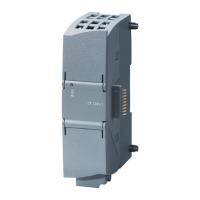
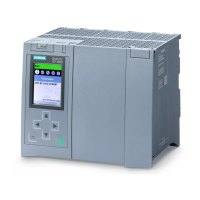
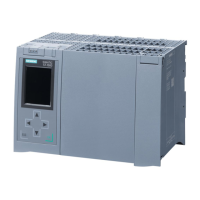


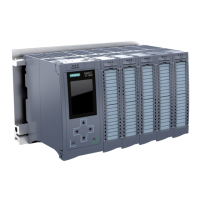
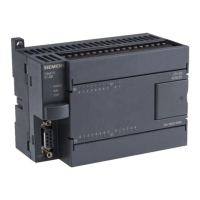
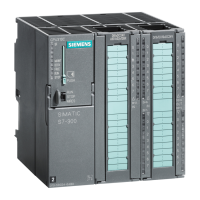
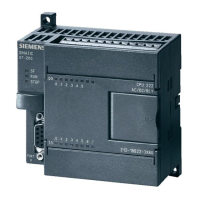
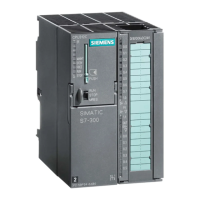
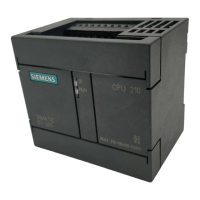
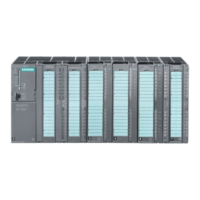
